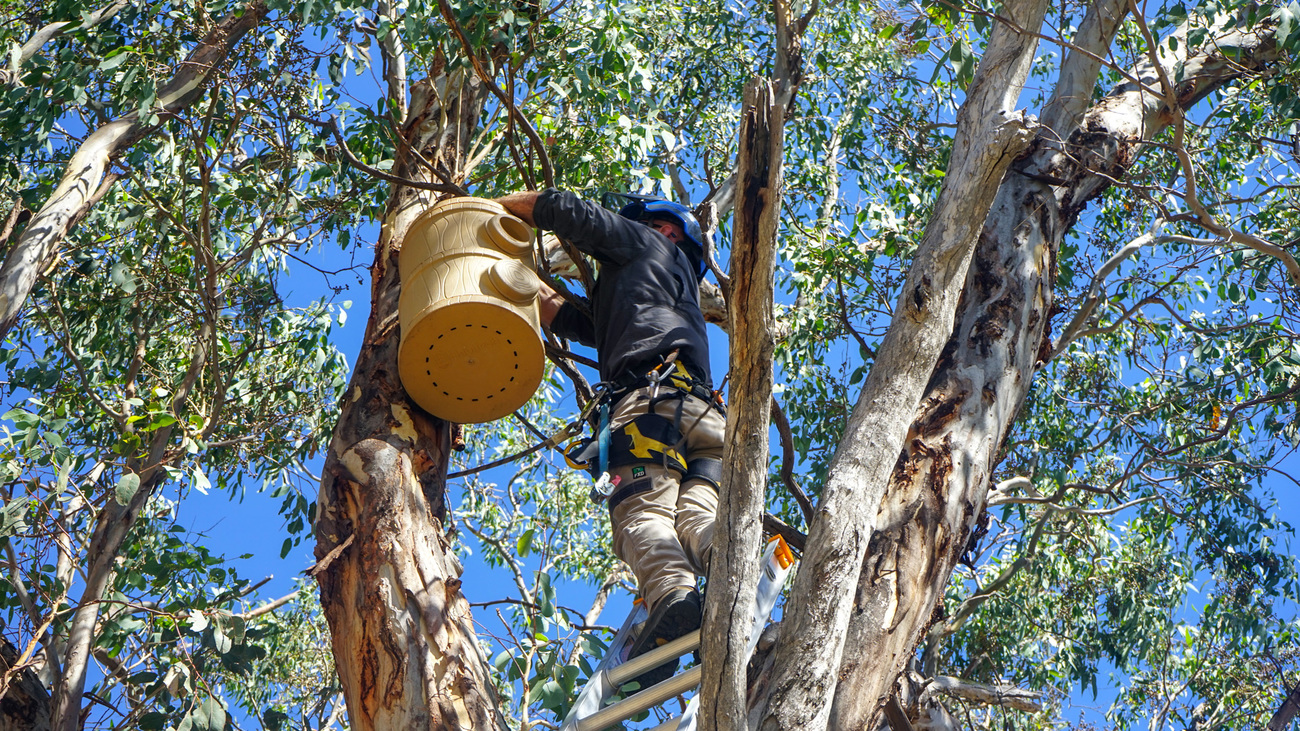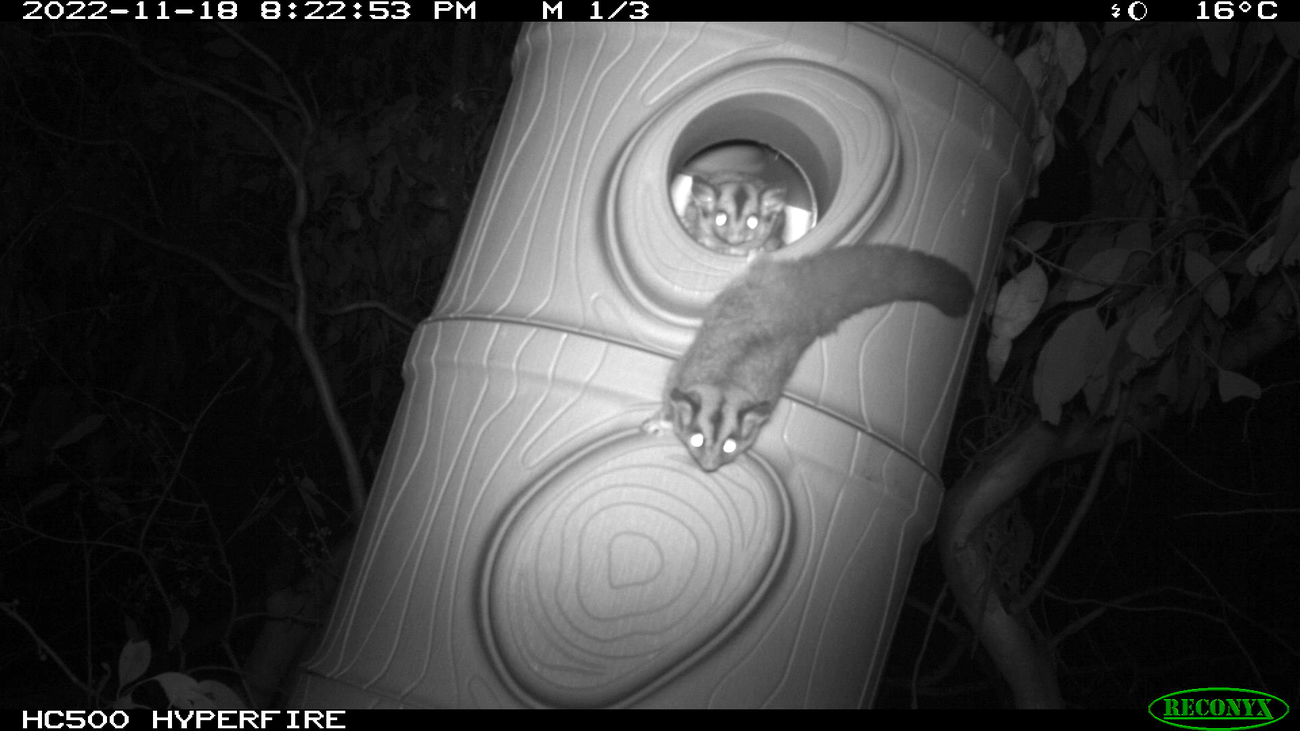Updates
Relief and recovery for animals and people in Myanmar
Read moreAustralian wildlife find homes in nest boxes after fires

Animals such as gliders, possums, and parrots which live in tree hollows were left homeless after the catastrophic Black Summer bushfires of 2019/2020 burnt out millions of hectares of land. Now, innovative ready-to-move-in homes for hollow-dependant animals are helping to restore native species to New South Wales (NSW).
Habitech nest boxes, designed by ecologists at Habitat Innovation & Management, mimic the stable microclimate of natural tree hollows which are vital for the survival of native hollow-dependent fauna. Made from composite material, they are modular, highly insulated, recyclable, weather resistant, and designed to last decades.
Working with a regional group called Kanangra-Boyd to Wyangala (K2W) Link—a network of local landholders, communities and organisations working to reconnect wildlife and natural resources by creating linkages across the landscape between the Greater Blue Mountains and Wyangala Dam in NSW—IFAW and partner Great Eastern Ranges (GER) installed more than 30 Habitech nest boxes across several properties in this region in 2022.

Natural hollows for smaller animals take up to 100 years to develop in trees while hollows for larger animals like greater gliders take up to 200 years or more to form, but artificial hollows provide an immediate ready-to-move-in home for animals.
We were excited to hear that recent monitoring found 80% of the boxes on some properties were showing signs of usage. Brushtail possums, krefft’s gliders, squirrel gliders, ringtail possums, and evidence of rosella bird nests were recorded in the nest boxes.
One of the properties had 10 boxes installed with footage showing squirrel gliders returning to the boxes and one box being used by a mother brushtail possum and her joey.
“We knew we had gliders because they had been picked up in an audit of bats and night birds, but we didn’t realise they were as plentiful as they seem to be. The gliders were investigating the new nest boxes within a week of installing them,” says property owner Sean Proudman.
The customisable design of the nest boxes means that in areas where gliders appear not to be using them, they can easily and affordably be modified to make them suitable for other species on a property.
“We’re always learning and adapting, and monitoring is a really big part of that. Understanding what is using, investigating, and potentially preying on animals that shelter in the nest boxes at each site means we can better target habitat for those species,” says Mick Callan, Principal Terrestrial Ecologist at Habitat Innovation & Management.
One box has even been used by European honeybees. The bees occupied the box, filled it with honeycomb and within four months moved on to find a larger home.
“Typically, to make the nest box habitable again will require gliders, possums or some other lucky critters to get in there and gorge themselves on honeycomb to open the box for future use. All part of the fascinating cycle of nature, and an area that is slowly gaining more understanding,” says Mick.
For two years, IFAW has been working to roll out climate disaster recovery projects with GER and their network of Indigenous and community groups, scientific experts, private landholders, and regional and local conservation groups like K2W Link. The work aims to restore and reconnect habitat, assist animals in need and boost community healing and resilience in NSW and Queensland.
With disasters such as bushfires and extreme weather events increasing due to climate change, IFAW and GER will continue to empower individuals and communities to give wildlife and the places they call home the best chance to rebuild and become resilient.
Every problem has a solution, every solution needs support.
The problems we face are urgent, complicated, and resistant to change. Real solutions demand creativity, hard work, and involvement from people like you.
Unfortunately, the browser you use is outdated and does not allow you to display the site correctly. Please install any of the modern browsers, for example:
Google Chrome Firefox Safari